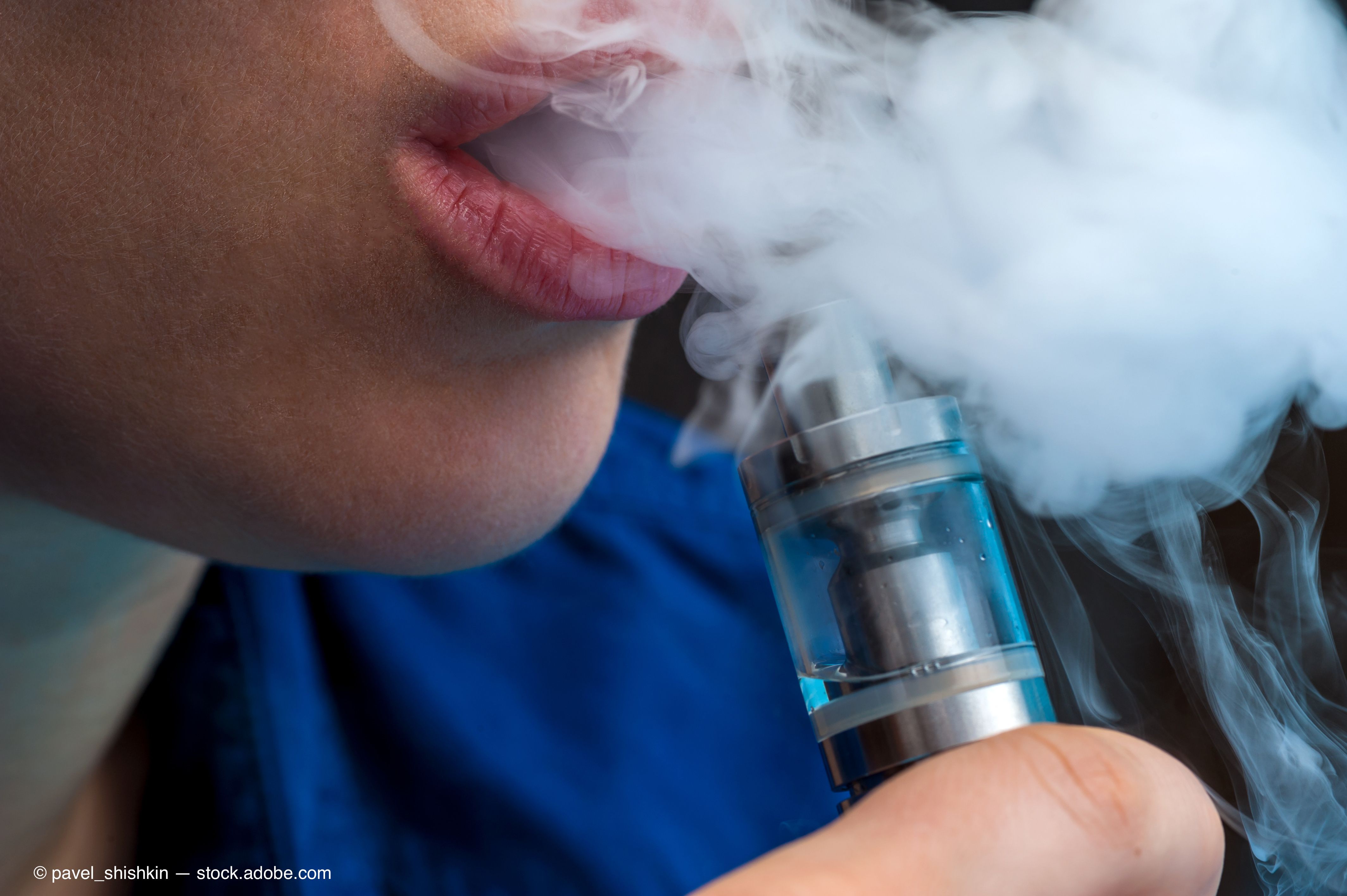Chest Imaging Reveals Traits of Vaping-Related Lung Injuries in Teens
Chest CTs and X-rays highlight characteristics of EVALI in teens.

Chest images collected from teen-agers who use e-cigarettes or vape share similar characteristics and can help speed up the diagnosis of lung injuries associated with those activities, according to a new study out today.
Chest CTs and X-rays from teens who exhibit respiratory symptoms, including shortness of breath, cough, and chest pain, can help radiologists pinpoint and diagnose e-cigarette or vaping product use-associated lung injury (EVALI) in this age group faster, according to research published in Radiology by an investigative team from the University of Texas Southwestern Medical Center in Dallas. The study is the first one to examine chest images from teens with EVALI, and the findings carry significant clinical importance.
“This population is particularly vulnerable to e-cigarette use and its potentially life-threatening consequences,” said lead study author Maddy Artunduaga, M.D., assistant professor of pediatric radiology.
According to the 2018 National Youth Tobacco Survey, 3.6 million middle and high school students reported using e-cigarettes in 2018. And, approximately 15 percent of all patients hospitalized due to EVALI are under age 18. Consequently, being able to look at a chest image and identified hallmark EVALI characteristics can enable radiologists to recommend potentially life-saving treatments faster.
To determine whether chest images in teens with EVALI share any common traits that can foster diagnosis and timely medical intervention, Artunduaga’s team examined chest CT and X-ray images from 14 patients (seven boys and seven girls) between the ages of 13 and 18 who had also, within 90 days of exhibiting symptoms, used e-cigarettes or dabbed – a practice of inhaling small quantities of a concentrated or vaporized drug, such as cannabis oil. Nine patients had only used tetrahydrocannabinol (THC)-containing products, one had only used nictonie-containing products, and four had used products containing both.
Adding CT scans to X-rays was necessary, she said, because CT provides a more complete assessment than X-ray alone. It does a better job of detailing how extensive the EVALI is, as well as the particular characteristics of the individual findings. And, given the lowered radiation dose for CT scans, reducing the risk to pediatric patients, the team felt justified in adding it to the evaluation process.
Based on image analysis, the research team determined all patients had bilateral EVALI, and all but one had symmetric ground-glass opacities. Consolidation was common, appearing in 64 percent (9 patients), and lower lobe predominance was identified in 50 percent (seven patients). The CT scans also revealed subpleural sparing in 79 percent of patients.
Additionally, the investigators noted 36 percent of patients also experienced a finding that was previously thought to only emerge with cryptogenic organizing pneumonia, an inflammation of the bronchioles and surrounding tissue in the lungs. These teens exhibited the reversed halo sign – the presence of a central ground-glass opacity that’s surrounded by a crescent-shaped area of denser consolidation. The presence of the halo indicates it is associated with a variety of pulmonary diseases, as well.
Artunduaga also cautioned that teens with gastrointestinal symptoms, such as vomiting, nausea, diarrhea, and abdominal pain, should also be suspected of EVALI. Twelve patients exhibited these symptoms alongside respiratory problems, and four presented isolated gastrointestinal symptoms first. In these cases, she said, the radiologist will likely be the first provider to suggest a possible EVALI diagnosis.
Ultimately, she said, being familiar with these shared characteristics will be vital to, potentially, decreasing the severity of injury in patients.
“Radiologists will continue to play an important role in the initial detection and follow-up of pediatric patients with EVALI,” she further explained. “When these imaging findings are observed in pediatric patients, with or without the history of exposure to e-cigarette or vaping products, EVALI should be included as a diagnostic possibility.”
What is the Best Use of AI in CT Lung Cancer Screening?
April 18th 2025In comparison to radiologist assessment, the use of AI to pre-screen patients with low-dose CT lung cancer screening provided a 12 percent reduction in mean interpretation time with a slight increase in specificity and a slight decrease in the recall rate, according to new research.
Meta-Analysis Shows Merits of AI with CTA Detection of Coronary Artery Stenosis and Calcified Plaque
April 16th 2025Artificial intelligence demonstrated higher AUC, sensitivity, and specificity than radiologists for detecting coronary artery stenosis > 50 percent on computed tomography angiography (CTA), according to a new 17-study meta-analysis.
Can CT-Based AI Radiomics Enhance Prediction of Recurrence-Free Survival for Non-Metastatic ccRCC?
April 14th 2025In comparison to a model based on clinicopathological risk factors, a CT radiomics-based machine learning model offered greater than a 10 percent higher AUC for predicting five-year recurrence-free survival in patients with non-metastatic clear cell renal cell carcinoma (ccRCC).
What is the Best Use of AI in CT Lung Cancer Screening?
April 18th 2025In comparison to radiologist assessment, the use of AI to pre-screen patients with low-dose CT lung cancer screening provided a 12 percent reduction in mean interpretation time with a slight increase in specificity and a slight decrease in the recall rate, according to new research.
Meta-Analysis Shows Merits of AI with CTA Detection of Coronary Artery Stenosis and Calcified Plaque
April 16th 2025Artificial intelligence demonstrated higher AUC, sensitivity, and specificity than radiologists for detecting coronary artery stenosis > 50 percent on computed tomography angiography (CTA), according to a new 17-study meta-analysis.
Can CT-Based AI Radiomics Enhance Prediction of Recurrence-Free Survival for Non-Metastatic ccRCC?
April 14th 2025In comparison to a model based on clinicopathological risk factors, a CT radiomics-based machine learning model offered greater than a 10 percent higher AUC for predicting five-year recurrence-free survival in patients with non-metastatic clear cell renal cell carcinoma (ccRCC).
2 Commerce Drive
Cranbury, NJ 08512
All rights reserved.